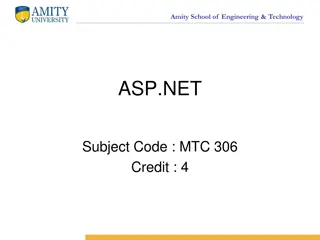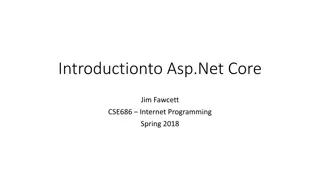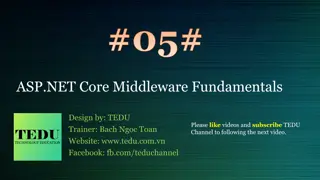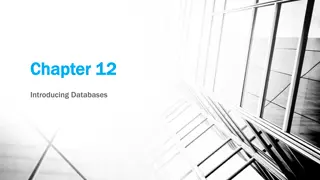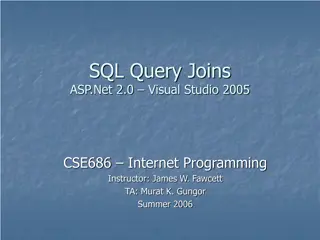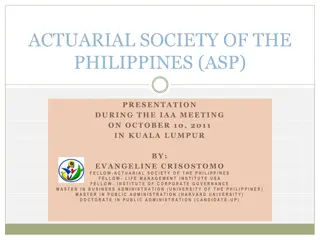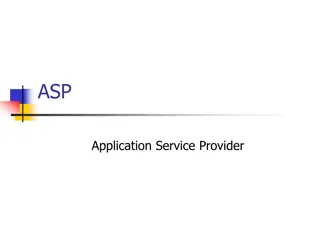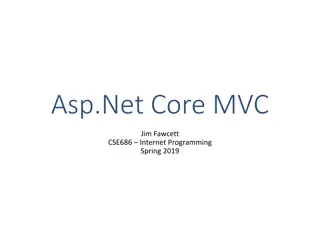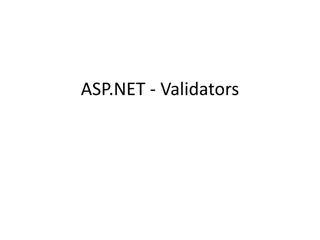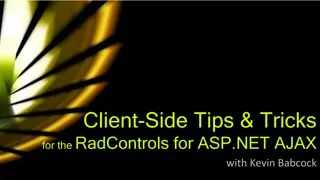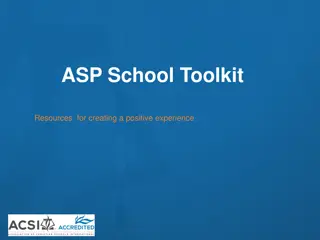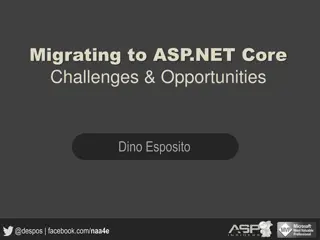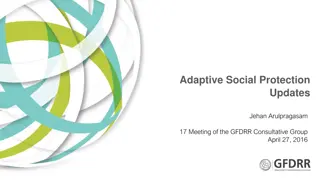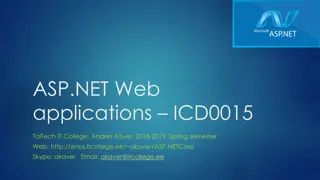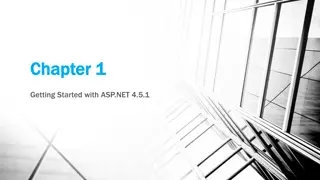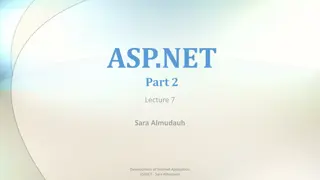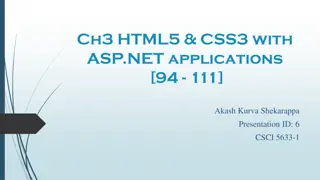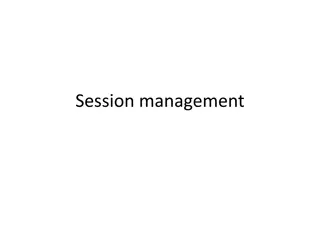Introduction to ASP.NET Web Application Development
An overview of creating ASP.NET web applications, including working with user interfaces, application files, ASPX and C# code. Learn how to develop a one-page web application using Visual Studio and understand server-side processing and client-side validation. Explore the structure and setup of web forms, files, and configuration settings for future value applications.
Download Presentation

Please find below an Image/Link to download the presentation.
The content on the website is provided AS IS for your information and personal use only. It may not be sold, licensed, or shared on other websites without obtaining consent from the author.If you encounter any issues during the download, it is possible that the publisher has removed the file from their server.
You are allowed to download the files provided on this website for personal or commercial use, subject to the condition that they are used lawfully. All files are the property of their respective owners.
The content on the website is provided AS IS for your information and personal use only. It may not be sold, licensed, or shared on other websites without obtaining consent from the author.
E N D
Presentation Transcript
CSCI 5633 WEB DATABASE DEVELOPMENT PP. 20-27, 31-39 PRESENTED BY LYDIA BIERER PRESENTATION #2 01/31/19
CHAPTER 1 AN INTRO TO ASP.NET PROGRAMMING OUTLINE HOW AN ASP.NET APPLICATION WORKS THE USER INTERFACE FOR THE FUTURE VALUE APPLICATION THE FILES USED BY THE FUTURE VALUE APPLICATION THE ASPX CODE FOR THE DEFAULT FORM THE C# CODE FOR THE DEFAULT FORM
CHAPTER 2 HOW TO DEVELOP A ONE-PAGE WEB APPLICATION OUTLINE HOW TO WORK WITH ASP.NET WEB SITES HOW TO START A NEW WEB SITE HOW TO ADD A WEB FORM TO A WEB SITE HOW TO WORK WITH THE VISUAL STUDIO IDE HOW TO ADD FOLDERS AND FILES TO A WEB SITE
THE USER INTERFACE FOR THE FUTURE VALUE APPLICATION FIGURE 1 SHOWS USER INTERFACE FOR A ONE-PAGE APPLICATION IN A FUTURE VALUE APPLICATION, A USER SELECTS A MONTHLY INVESTMENT AMOUNT, ENTERS DATA AND CLICKS CALCULATE IF DATA IS VALID, THE FUTURE VALUE IS DISPLAY. OTHERWISE, AN ERROR MESSAGE IS DISPLAYED. THE PROCESSING OF THE CALCULATE AND CLEAR BUTTONS IS DONE ON THE SERVER SIDE. IF JAVASCRIPT IS ENABLED, THE VALIDATION IS DONE ON THE LOCAL MACHINE THEREBY SAVING DATA FROM GOING TO THE SERVER.
THE FILES USED BY THE FUTURE VALUE APPLICATION FIGURE 2 SHOWS FUTURE VALUE FORM AS SHOWN IN THE WEB FORMS DESIGNER OF VISUAL STUDIO. DEFAULT.ASPX CONTAINS CODE THAT REPRESENTS THE DESIGN OF THE FORM DEFAULT.ASPX.CS IS THE CODE-BEHIND FILE WRITTEN IN C# THAT CONTROLS THE OPERATION OF THE FORM WEB.CONFIG FILE CONTAINS CONFIGURATION INFORMATION SUCH AS WHICH VERSION OF THE .NET FRAMEWORK IS BEING USED.
HOW TO START A NEW WEB SITE WEB FORMS SITE V. WEB FORMS APPLICATION Feature Site Application Project Files None One or more Compilation At run time Pre-compiled to single assembly Class file location App_Code folder Anywhere in folder structure How to start (VS) FILE->New->Web Site FILE->New->Project How to start (VS Express) FILE->New Web Site FILE-> New Project


